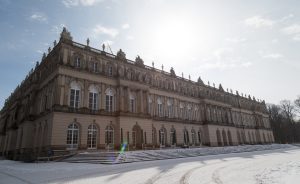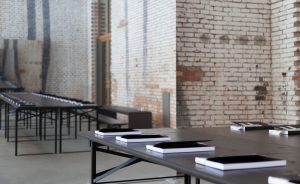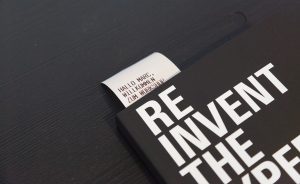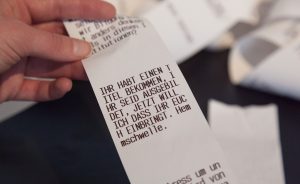We live in an age in which society is dramatically changing as technology continues to progress and we becoming increasingly interconnected. In addition to having a major impact on global economies, it also affects the art world: Every art institution, whether orchestra or museum, needs to ask itself: How do we encounter people today? Are we willing to open up the old bastions and schools of thought to approach people, renew ourselves, reach new target audiences, and participate actively in discussions with them?
Art and space
These are the very topics that have always concerned Michael Keller. The first is art. The other is the space in which people encounter art: Does art always have to be in a museum? Do spaces for art need to be built to last an eternity? How can we define new spaces for art that are more welcoming and open to visitors, which make it accessible to all? Are there other ways of distributing and communicating art? We invited like-minded people to join us at a workshop at Herrenchiemsee Palace. On the first Saturday in March we would explore and discuss these questions as a group: “new spaces for art”.
Embrace the experience
We also wanted a group of participants that would be open to this exercise: some friends, companions, supporters. Some people became interested after finding us in the MCBW program. The group of 36 people who undertook the trip across the lake felt as if this shared experience had brought them closer together. The journey opened their eyes, giving them a stunning view of the mountains and the feeling of being part of something special.
“Unfinished Chambers”
The spaces in which we met further reinforced this feeling: The “Unfinished Chambers” in Herrenchiemsee Palace are usually not accessible to the public. The unplastered brick walls in the four large, connected rooms have never been finished. Such spaces inspire a thought experiment if for no other reason than the fact that they are not a preconceived form.
This was the very idea behind our event: an open-ended experiment. To give the discussion a bit more structure, we divided up into six workshops, each involving six participants and facilitated by a host.
Exploring spaces
“Space of Time”, hosted by Dr. Corinna Thierolf (Pinakothek der Moderne), focused on the temporal component of the art space. One of the discussions focused on the event culture in the art world: How can we make topics interesting without making them into too much of an event? “Everyone is talking about finding peace, quiet and concentration – do you have to go to therapy to do that? Why can’t art be viewed in a quiet, contemplative way?” or “How many new things do we need? Who goes to collections that always show the same work?”
In his workshop, titled “The Real Space”, Benjamin David from die urbanauten discussed how art can encompass public space for itself, like the Isar Bridge near the Wittelsbacher Bridge, which has not been used for nearly 50 years.
In “Space of Learning”, Dr. Meike Zwingenberger (Amerikahaus) explores the question of how art can be presented in different ways: “We’re familiar with exclusive, elitist spaces for art. Socialization is necessary to make these structures feel valid.” In other words: “The educated classes are posing intellectually.”
Julia Peglow, blogger and writer for Blackspace, looked at the locations in which art is created and asked whether these could be opened up to art enthusiasts without disturbing the artist’s creative process or privacy.
Annette Josef, Artistic Director of the Munich Symphony Orchestra, discussed new types of financing for art in her workshop, “Space Money”. Michael Keller, initiator and host of the event, examined the interplay between art as content and the space in which it takes place in his workshop, titled “Space of Content”. “GET OUT! DO SOMETHING! Be more radical. Come together. Have opinions. Create an attitude. Build awareness.” And: “There isn’t enough hungry new talent to foster a mindset focused on open space.”
Rich source of inspiration
While these groups have never met in these constellations before, each of the six workshops produced intense, open discussions that were logged and printed out on continuous paper by thermal printers on each workshop table, making this intellectual raw material visible to everyone.
We are taking these ideas and raw material from this special day to our Black Lab for further processing. We are also putting the video material and sound footage to create a documentary called “new spaces for art”. More such events are planned for the future.
In May, these rooms will also host the fourth “Königsklasse«” exhibition from the Pinakothek der Moderne, a temporary exhibition organized by the International Patrons, of which Dr. Corinna Thierolf and Michael Keller are members.














